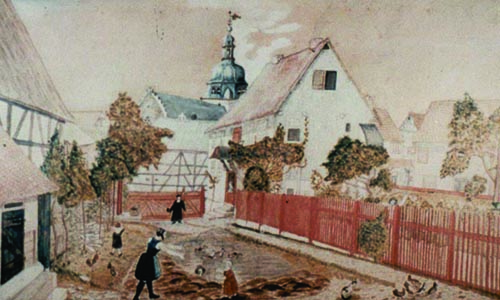


The Nieder-Weisel Story
These pages attempt to summarise the amazing research carried out by Kelvin Williams over a period of about 20 years up until his death in October 1999. Some of Kelvin’s ancestors came to Australia, as did mine, from the small German village of Nieder-Weisel in the 1850s in an attempt to better their lives. Kelvin began to research those ancestors, but before long he extended it to cover all of those who came, their family histories, why they came, and where they went to.
Kelvin covered about 300 individuals, and he prepared a biography of every one of them – they have been loaded onto this site, and cross-referenced as much as is practical.
The Village History
THE EARLY HISTORY OF THE VILLAGE

The Ships
The passenger lists of all those ships which arrived in Victoria from 1852 (when records commenced) up until 1863 were examined by Kelvin Williams, and details of passengers with names that were known to have been in use in Nieder-Weisel were extracted. The names were listed in roughly chronological order of the ships’ arrivals, and each passenger uniquely identified by a reference number – S001 to S899. Many of them were later deleted when it became clear that they were not immigrants from Nieder-Weisel.
Kelvin’s list, covering three pages, can be viewed at Page 1, Page 2, and Page 3.
The Migration
AFTER THE CONFLICTS
Following the defeat of Napoleon and the appearance of allied armies in the regions, conditions in the village generally remained uncertain. The teaching standard in the village school reached its nadir, and it was not until the pastoral and educational functions were finally separated and the well-qualified Frees family brought in during the early 1820s that the situation was properly addressed, and literate students began to graduate once more. In a village which had not before experienced significant unemployment, desperate men adopted desperate measures. Burglary and theft, not always without violence, burgeoned. The Court of Jurors was not able to handle the situation and it was allowed to wither away completely by 1820 – the district courts taking over its function.
The search for alternative means of employment led to a significant expansion in “cottage industries”, including linen weaving and stocking making, which could provide a reasonable standard of living for a family. Some people found markets in parts of Germany and France for the brightly-painted, hand-carved wooden utensils they made in their homes during the cold winter months and hawked around Europe during the summer.



